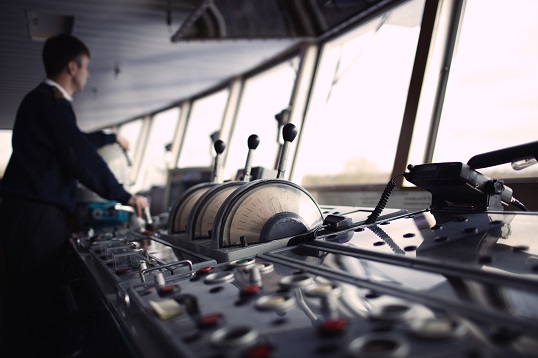
The coronavirus pandemic saw the UK introduce a nationwide furlough scheme to help companies retain workers who otherwise would have been made redundant. Now that the scheme is closed, Saffiyah Khalique looks at what we know about how it affected seafarers during the pandemic
What was the furlough scheme?
The UK government introduced the Coronavirus Job Retention Scheme (CJRS) – commonly referred to as the furlough scheme – in April 2020. Under the scheme, HMRC would cover 80% of a furloughed employee’s wages, up to £2,500 per month.
Being furloughed meant that workers remained employed by the company and were still bound by their terms and conditions of employment. Once an employee was furloughed, they could not carry out any work that generated revenue for the employer; however, training was permitted provided they received the National Minimum Wage for any hours spent training. Later, employees were allowed to work part-time and receive a furlough grant for the additional hours.
There were several other changes and extensions until 30 September 2021, when the scheme finally ended, with the government ceasing to cover 60% of wages up to £1,785 for the hours the employee was on furlough.
How did it affect seafarers?
With the dip in income for furloughed workers, maritime charities stepped up to offer help. Among others, the Maritime Charities Group created its Covid-19 Redundancy and Retraining Fund, administered by the Marine Society (see page 44). The Seafarers' Advice & Information Line (SAIL) provided information on financial support including benefits, debt relief, housing and charity grants, while Seafarers UK provided individual support through a free telephone help assessment service for seafarers and via Turn2Us, a national charity providing practical help and financial grants to people who are struggling financially.
Statistics on seafarers taking furlough are difficult to track down, as the Department for Transport’s report ‘Seafarers in the UK Shipping Industry: 2020’ counts furloughed seafarers as ‘active at sea.’ However, as the UK Chamber of Shipping noted, seafarers were not specifically confirmed as being able to be furloughed, which could explain the lack of statistics on those who have taken up the scheme, as the government guidance on furlough states it can be used for employees on ‘any type of contract’.
In a parliamentary debate on 17 September 2020 titled 'Seafarers: Furlough Scheme', Labour MP Karl Turner asked for an estimate of how many UK seafarers would be directly affected by the end of the furlough scheme. Maritime minister Robert Courts acknowledged that there was a failure to collect adequate information on this point, saying: 'There is no appropriate statistical breakdown. The government’s focus is to support the sector’s recovery and to stimulate jobs and growth.'
A member's account
Many workers found being on furlough a stressful experience: often furloughing was accompanied by lay-offs, leading to concerns that there would be further job cuts before people returned to work. In some cases, it was as useful to employees as employers. David Faulds, a Nautilus member employed by Red Funnel, shared his story on taking furlough and the transition back into work at sea with Telegraph.
Mr Faulds works as a chief officer for Red Funnel Ferries operating out of Southampton. Unlike some other employees who were put on furlough early in the pandemic, he took it up later due to family circumstances. He lost his father last year and was able to return to work after that; however, his grandmother soon passed away after that. 'I just wasn’t myself, so I requested then to go on furlough because there were people on furlough that wanted to come back,' he said.
This prompted Mr Faulds to take up furlough in May 2020. He said furlough allowed him the time to deal with the grief he was going through. 'I was able to use furlough, probably not for what it was designed for, but it was suitable for me at the time.'
Mr Faulds spent about a month on furlough. Being at home with his wife and children made life easier during the difficulties his family was going through. 'Just by being home, it was for the better, for all of us to be together, especially when you couldn’t do much in the outside world.'
In terms of pay, the government supplemented 80% of the employee’s wages, however Mr Faulds’s salary was higher than what the government offered. His employer topped up the government’s amount to reach the 80% base salary.
On his return to work, the transition was smooth, and he noted that the changes to his job were around Covid restrictions and protocols, such as the implementation of mask wearing; however, his actual role onboard didn’t change.
'For us, the only thing that changed during the whole lockdown period at work was that our ships were slightly reduced because there was less of a running of a vessel, but still enough crew to spread out the workload. But there was no flexibility, you were still working on a rota for your shift patterns.'
He said that it does take some time to re-familiarise yourself with the job. 'Those people that took the most time off, when they came back, they had to go through re-familiarisation before the ships could even sail. It was not difficult, but it was just a bit of a process added on to make sure everything went ahead.'
As a Union representative, he notes that some people who went on furlough did not realise they had a choice in this. 'I did find that a lot of people who went on furlough thought they had to go on furlough. Don’t get me wrong, a lot of people would be stupid to argue “no” to furlough because the whole point of the system was to protect the company, financially, and the people. But some people didn’t realise they could just say no. People thought they were just told to go on furlough rather than getting asked.'
Tags
